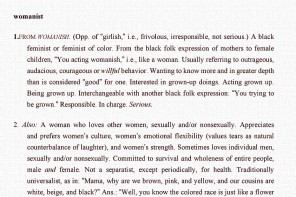I am hesitant to write this essay because the first time I explored the relationship between atonement theology and justifications for torture in public, a woman spit in my face.
Two years ago, I presented a paper at the annual meeting of the American Academy of Religion about the effects of interpreting the photographs from Abu Ghraib as crucifixion images. I proposed that versions of atonement theology that frame the violence on the cross as “salvific” and “necessary” influence how Christians understand torture. I pointed out that the United States government uses a version of atonement theology to sanction torture and abuse: soldiers and military police are ordered to use “harsh techniques to gain information to save lives”; they “felt pressure to obtain information that could help save the lives of American soldiers.” [1]
Might atonement theologies and images of the crucifixion prepare Christians to see torture as salvific?
After my presentation, a woman from the audience spit in my face.
People at the Pew Research Center might want to keep an eye out for her. I think the results of their survey released last week lend support to my proposal that some forms of Christianity have prepared some Christians in some communities to understand torture as salvific, necessary, and justified. The results of the survey revealed that those who attend weekly church services are more likely than those who rarely or never attend services to say the use of torture on suspected terrorists is justifiable. Going to church increases the likelihood that people will support torture, especially if they are white evangelical Protestants. This is not good news.
But is it a surprise?
Almost immediately after the publication of the photographs from Abu Ghraib in 2004, commentators began to refer to them as crucifixion images, likening the pictured bodies to the “mortified Christ.” Most particularly mentioned the “hooded man’s” similarity; insisting that that “the image is particularly evocative for Christian viewers.” [2]
Commentator after commentator insisted that the “symbol of the Christ figure” was “unmistakable” in the images of prisoners tied to jail bars and handcuffed to beds; of prisoners standing with their arms stretched out, palms facing upward. [3]
Even one of the soldiers engaged in the abuse thought the detainees looked like Jesus. In a letter written home while she was stationed at Abu Ghraib, Private Sabrina Harman wrote, “I cant [sic] get it out of my head. I walk down the stairs after blowing the whistle and beating on the cells with a [baton] to find ‘The taxicab driver’ handcuffed backwards to his window naked with his underwear over his head and face. He looked like Jesus Christ.” [4]
How violence is interpreted shapes how people respond to it. The comparison of the photographs from Abu Ghraib to crucifixion images suggests that the violence in those photographs has been seen through the lens of the crucifixion, and that this theological story has shaped how torture is understood. What does this interpretation reveal about the relationship between theologies of atonement and torture? Are Christians theologically prepared to accept torture? Even to practice it?
I do not presume to know the answers to these questions, but I hope Christian communities will be brave enough to ask them. I hope the results of the Pew survey will challenge Christians to ask difficult, critical, uncomfortable questions about what happens in churches on Sunday mornings. Despite our intentions, how might the words of our liturgies justify torture? How might the images hanging in our churches justify torture? How might our theology justify torture? How might the very symbols that give comfort also cause harm? What needs to change?
When I am teaching about the photographs from Abu Ghraib, I sometimes put an image of the crucifixion on the screen and ask students what phrases come to mind when they see this image. “He died for us,” some say. “By His wounds, we are healed,” others say. Still others call the violence “cleansing” and “necessary,” “payment for our sins,” a “ransom,” a “gift.” If you believe that a man was tortured to save your life, if you believe that the violence on the cross was necessary, if you believe God demanded Jesus’ death on the cross, how do those beliefs affect how you understand violence more generally? At the center of Christianity is a man who was tortured. How this event is understood, interpreted, and believed in will, at least in part, shape how Christians understand torture. What kind of interpretation of the crucifixion might generate an anti-torture response?
In his sworn statement about his experience at Abu Ghraib, Ameen Sa’eed Al-Sheikh details what the guards did to him: they beat his broken leg, threatened to rape him and his wife, threatened to kill him, put a gun to his head, deprived him of blankets and clothing, drew pictures of women on his back, made him stand naked and hold his buttocks, urinated on him, hung him from his bed using handcuffs until he lost consciousness, hung him from the cell door, took photographs of him, forced him to eat pork and to drink liquor. In the middle of his deposition, Al-Sheikh said”
Someone else asked me, “Do you believe in anything?” I said to him, “I believe in Allah.” So he said, “But I believe in torture and I will torture you…” Then they handcuffed me and hung me to my bed. They ordered me to curse Islam and because they hit my broken leg, I cursed my religion. They ordered me to thank Jesus I’m alive. And I did what they ordered me. This is against my belief. [5]
What will it take to make torture against Christians’ belief?
NOTES:
1. The Honorable James R. Schlesinger, et al., “Final Report of the Independent Panel to Review Department of Defense Detention Operations,” in The Abu Ghraib Investigations: The Official Reports of the Independent Panel and the Pentagon on the Shocking Prisoner Abuse in Iraq, ed. Steven Strasser, (New York: PublicAffairs, 2004), xvi-xvii, xix, 25.
2. Paul A. Taylor, “The Pornographic Barbarism of the Self-Reflecting Sign,” International Journal of Baudrillard Studies 4, no. 1 (January 2007)
3. Steven C. Caton, “Coetzee, Agamben, and the Passion of Abu Ghraib,” American Anthropologist 108, no. 1 (2006): 120.
4. Joanne Wypijewski, “Judgment Days: Lessons From the Abu Ghraib Courts-Martial,” Harpers, February 2006.
5. Mark Danner, “The Depositions: The Prisoners Speak,” in Torture and Truth: America, Abu Ghraib, and the War on Terror, (New York: New York Review of Books, 2004), 227.




